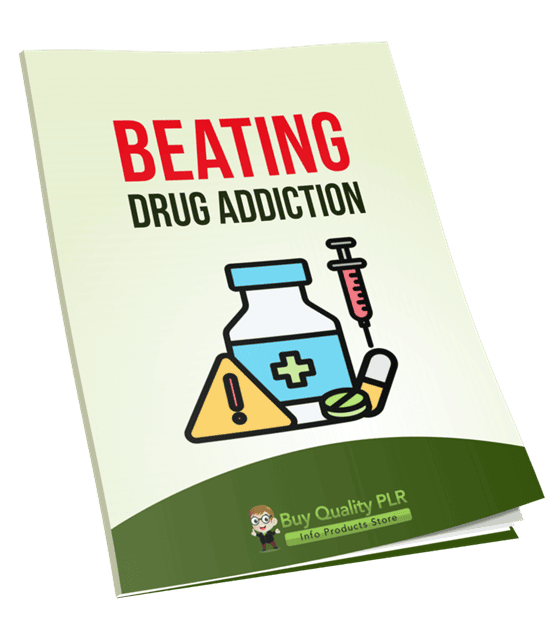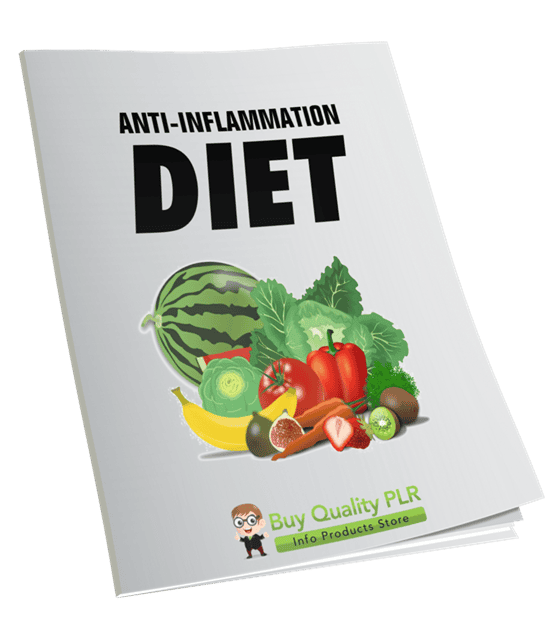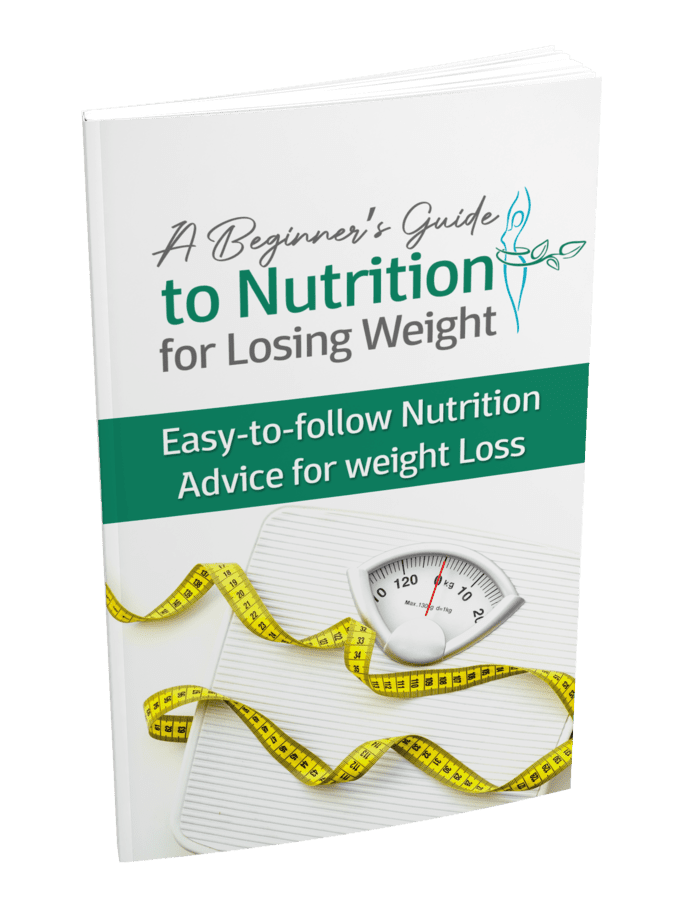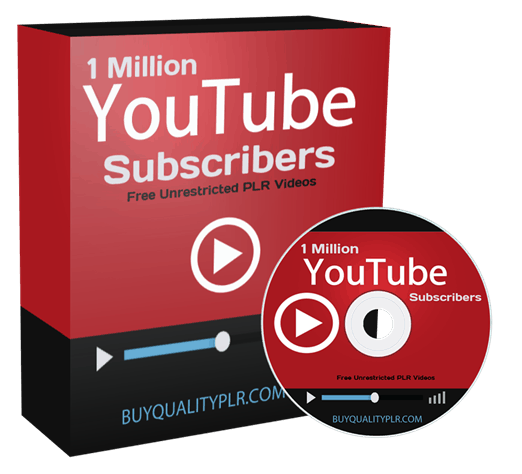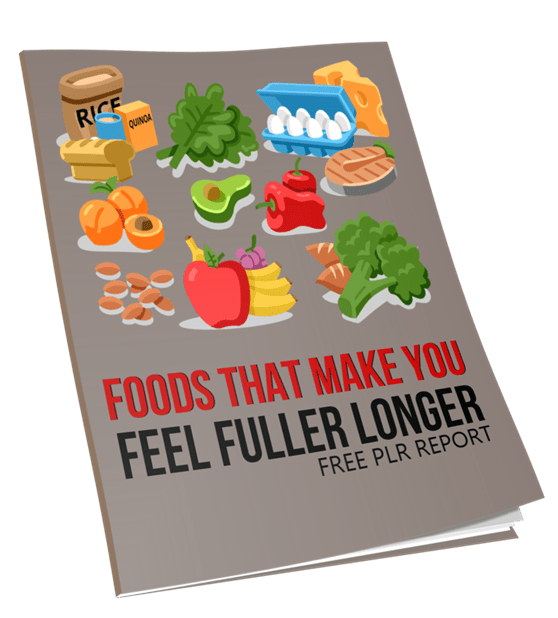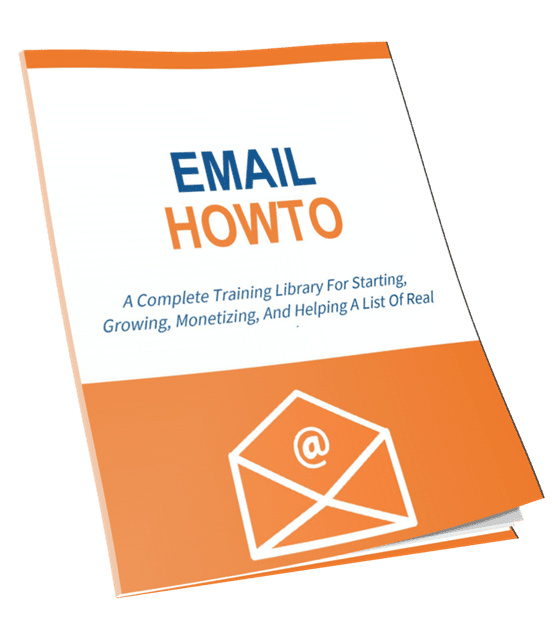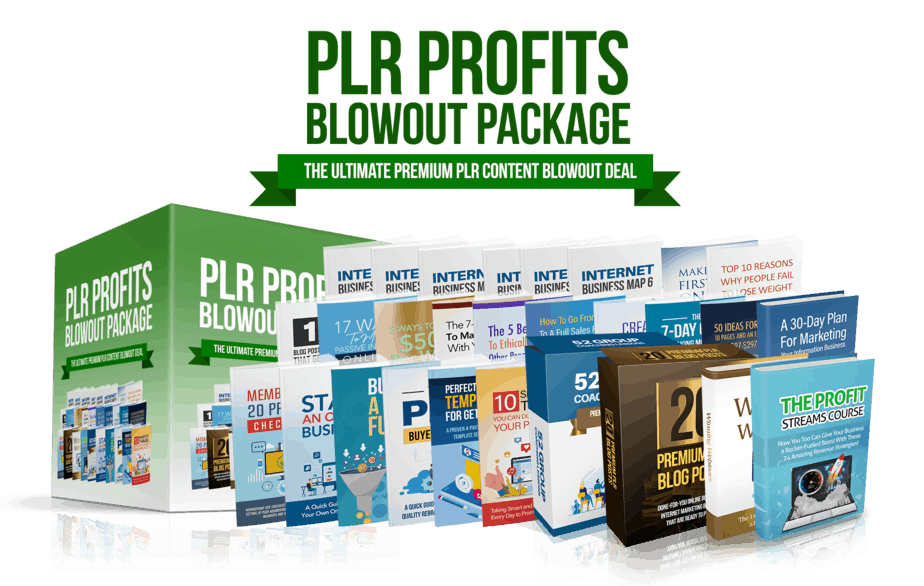
Heart Health PLR Course 27k Words
in Health PLR eBooks , Heart Health PLR , PLR Checklists , PLR eBooks , PLR eCourses , PLR List Building Reports , Premium PLR , Premium PLR eBooks , Premium PLR Reports , Premium White Label Brandable PLR Coaching Courses , Private Label Rights ProductsChoose Your Desired Option(s)
has been added to your cart!
have been added to your cart!
#hearthealth #plrcourse #healthyliving #heartcare #wellnesseducation #plrcontent #healthandwellness #heartawareness #lifestyletips #preventheartdisease
Heart Health PLR Course – Transform Lives and Build a Profitable Online Business! ❤️
Are you ready to tap into a high-demand health niche while creating a profitable online business? Imagine offering a complete, ready-to-use course that empowers people to take control of their heart health, while giving you multiple ways to monetize the content.
Introducing the Heart Health PLR Course: A Step-by-Step Journey to a Healthier Heart, a comprehensive 25,286-word package designed for entrepreneurs, health coaches, bloggers, and online business owners who want a turnkey product they can brand, sell, or repurpose.
This is not just another generic health product – it’s a carefully structured, actionable, and engaging course that guides your audience through understanding their heart, improving nutrition, exercising effectively, managing stress, and building lifelong heart-healthy habits.
Presenting…
Heart Health PLR Course 27k Words

What Makes This PLR Course Unique?
- Complete Step-by-Step Curriculum
The course is broken down into 5 highly structured modules that cover everything your audience needs to know:- Module 1: Understanding Your Heart – Learn the heart’s structure, common myths, risk factors, and why prevention matters.
- Module 2: Nutrition for a Healthy Heart – Discover heart-healthy foods, grocery lists, meal plans, and easy food swaps.
- Module 3: The Power of Exercise – Understand how physical activity strengthens the heart and get tips to create a fun, manageable fitness routine.
- Module 4: Managing Stress for Heart Health – Learn the connection between stress and heart disease, and get practical stress-busting techniques.
- Module 5: Long-Term Heart Health Habits – Commit to lifestyle changes, track progress, build support systems, and stay motivated.
Each module is easy to understand, practical, and designed for action, ensuring your audience will see real results.
- Extra Resources for Maximum Value
- Heart Health Checklist – A 557-word quick reference guide for daily heart health tips.
- Heart Health FAQs – 1,101 words answering common questions to establish authority and trust.
- Ready-to-Use Sales Page – 855 words to promote the course, perfect for your website or landing pages.
These extras make the PLR package more versatile and help you position yourself as an expert in heart health, even if you’re just starting out.
- Fully Editable & Brandable
Everything is editable, meaning you can:- Add your name, logo, or brand colors.
- Update content to match your style or voice.
- Split content into smaller reports, eBooks, or blog posts.
This flexibility ensures your product feels unique and personalized, even though it’s PLR.
Why Heart Health is a High-Demand Niche
Heart disease is one of the leading causes of death worldwide, and millions of people are looking for ways to improve their heart health. Your audience could include:
- Health-conscious individuals looking to prevent heart disease.
- Fitness enthusiasts seeking heart-healthy routines.
- Busy professionals needing simple, practical lifestyle tips.
- Bloggers, coaches, or online business owners looking to educate their audience.
By offering this course, you’re providing real solutions in a niche that will always be in demand.
How You Can Profit from This PLR Course
The beauty of PLR (Private Label Rights) content is the flexibility and profit potential. Here are proven ways to monetize the Heart Health PLR Course:
- Sell the Full Course as-Is
With your branding added, sell the course directly as a digital product or eBook. Charge $47–$97 for a complete, ready-to-go program. - Break It Into Reports or Mini-Guides
Each module can be turned into individual reports. Sell them for $10–$20 each, creating multiple streams of income from one PLR purchase. - Bundle with Other Products
Combine with other health or lifestyle PLR content to create premium bundles. These can be sold for $97–$297, adding perceived value and increasing revenue. - Create a Membership Site
Upload the course modules as part of a membership site and generate recurring monthly revenue. Offer exclusive tips, checklists, and updates to keep members engaged. - Convert Into an Online Class
Turn the content into a multi-week e-course. Charge $297–$497 per enrollment. Use videos, audios, or live sessions to increase value and attract higher-paying customers. - Repurpose Content for Lead Generation
Use portions of the content as blog posts, newsletters, or free guides to build an email list. Once subscribers trust your expertise, upsell them the full course. - Create Audio or Video Products
Record the course as audio lessons or videos, perfect for YouTube, podcasts, or paid courses on platforms like Teachable, Kajabi, or Udemy. - Flip a Ready-Made Website
Use the course content to populate a health-focused site, establish traffic, and flip the site for profit.
With these strategies, the profit potential is unlimited – all from one high-quality PLR package.
License Terms – What You Can & Can’t Do
Permissions:
- Sell, rebrand, or repurpose the content.
- Use portions for lead magnets, blog posts, or membership content.
- Create premium packages, e-courses, or physical products.
Restrictions:
- Cannot pass PLR or resell rights to others.
- Maximum affiliate commission is 75%.
- Cannot give away the full course for free in its original state.
These rules ensure your product retains value and remains profitable.
Why This Course Will Sell
- High-Quality, In-Depth Content – 25,286 words of actionable, expert guidance.
- Highly Relevant Health Niche – Millions of people are actively seeking heart health solutions.
- Versatile Formats & Multiple Uses – eBooks, reports, membership content, audio, video, and more.
- Ready-to-Use Marketing Materials – Comes with a full sales page, FAQs, and checklist.
- PLR Flexibility – Brand it, edit it, or expand it – the content is yours to profit from.
By offering your audience a product that truly improves lives, you’ll not only build trust and credibility but also create a reliable income stream.
Who This Product is Perfect For
- Health Coaches & Trainers – Teach your clients step-by-step heart health strategies.
- Bloggers & Online Marketers – Offer a premium digital product to grow your business.
- Entrepreneurs & PLR Buyers – Get a done-for-you, ready-to-sell course with multiple monetization options.
- Membership Site Owners – Keep your members engaged with high-quality, actionable content.
No matter your audience, this PLR course fits seamlessly into any health or lifestyle business.
Take Action Today!
The Heart Health PLR Course is more than just a product – it’s a turnkey business opportunity. It gives you everything you need to:
- Educate and empower your audience.
- Build authority in the health niche.
- Generate multiple streams of income.
- Launch quickly without creating content from scratch.
With this course, you can start selling immediately, brand it your way, and watch your online business thrive.
Remember: Heart health is a topic everyone cares about. By helping others improve their lives, you’re creating value while building a profitable online business at the same time.
Get Your Heart Health PLR Course Today and Start Profiting!
has been added to your cart!
have been added to your cart!
Here A Sample of Heart Health PLR Course
This course is designed to help you take charge of your heart health with actionable steps, easy-to-understand concepts, and plenty of encouragement along the way.
Module 1: Understanding Your Heart
Goal: Learn the basics of how your heart works and why it’s so important to care for it.
Step 1: Get to Know Your Heart
Think of your heart as the engine of your body. We’ll cover its structure, how it pumps blood, and why it’s essential for every aspect of your health.
Understanding your heart is the first and most crucial step in taking control of your heart health. This step lays the foundation by helping you visualize your heart as the powerhouse that fuels your entire body. Below, we’ll walk through this step in detail so you can fully grasp the significance of your heart, its structure, and how it keeps you alive.
1. Visualizing Your Heart’s Role
Before diving into the science, imagine your heart as the engine in a car. Just like an engine powers a vehicle, your heart pumps life-sustaining blood throughout your body. Without a functioning engine, the car won’t move; similarly, without your heart’s tireless efforts, your body cannot function.
- What makes the heart unique? Unlike a car engine, your heart never stops—it works continuously, even as you sleep. On average, it beats about 100,000 times a day, pumping approximately 5 liters of blood per minute through a vast network of blood vessels that could circle the Earth twice.
- Key takeaway: Your heart is a dynamic, self-regulating organ that powers your body’s survival, growth, and activity.
2. The Structure of the Heart
The human heart is a muscular organ about the size of your fist, located slightly to the left of your chest. To understand how it works, let’s break down its key parts:
- Chambers: The heart has four chambers: two upper chambers (the atria) and two lower chambers (the ventricles).
- Right atrium: Receives deoxygenated blood from the body.
- Right ventricle: Pumps deoxygenated blood to the lungs for oxygenation.
- Left atrium: Receives oxygenated blood from the lungs.
- Left ventricle: Pumps oxygen-rich blood to the entire body.
- Valves: Valves act as gates that ensure blood flows in one direction. The main valves are:
- Tricuspid valve: Between the right atrium and ventricle.
- Pulmonary valve: Between the right ventricle and pulmonary artery.
- Mitral valve: Between the left atrium and ventricle.
- Aortic valve: Between the left ventricle and the aorta.
- Blood Vessels: The heart is connected to three main types of blood vessels:
- Arteries: Carry oxygen-rich blood away from the heart. The largest artery, the aorta, distributes blood to the body.
- Veins: Bring oxygen-poor blood back to the heart. The largest veins are the superior and inferior vena cava.
- Capillaries: Tiny vessels where oxygen and nutrients are exchanged with cells.
- Muscle Layers:
- Endocardium: Inner lining of the heart.
- Myocardium: Thick, muscular middle layer responsible for contractions.
- Pericardium: Protective outer layer that cushions the heart.
3. How Your Heart Pumps Blood
The heart operates like a highly coordinated machine. Here’s a simplified version of the cardiac cycle, the process by which your heart pumps blood:
- Step 1: Blood enters the right atrium
Deoxygenated blood from the body flows into the right atrium via the superior and inferior vena cava. - Step 2: Blood flows to the right ventricle
The tricuspid valve opens, allowing blood to move into the right ventricle. - Step 3: Blood is sent to the lungs
The right ventricle contracts, pushing blood through the pulmonary valve into the pulmonary arteries. This blood travels to the lungs to pick up oxygen and release carbon dioxide. - Step 4: Oxygenated blood returns to the heart
Oxygen-rich blood returns from the lungs to the left atrium via the pulmonary veins. - Step 5: Blood moves to the left ventricle
The mitral valve opens, and blood flows into the left ventricle. - Step 6: Blood is pumped to the body
The left ventricle, the most powerful chamber, contracts and sends blood through the aortic valve into the aorta. From there, it’s distributed to the rest of the body.
This entire process takes less than a second to complete, ensuring a constant supply of oxygen and nutrients to your tissues.
4. Why the Heart is Essential for Every Aspect of Health
Your heart does much more than pump blood. It’s the cornerstone of your overall health, and here’s why:
- Provides Oxygen and Nutrients: Every cell in your body relies on oxygen and nutrients delivered by your blood. Without this, your organs and tissues would fail.
- Supports Waste Removal: The heart helps remove carbon dioxide and other waste products, ensuring your body remains clean and functional.
- Regulates Body Temperature: Blood flow helps maintain your core temperature, preventing overheating or excessive cooling.
- Affects Brain Health: Proper blood circulation is critical for brain function, memory, and mood. A healthy heart directly supports cognitive performance.
- Longevity and Quality of Life: A strong, healthy heart reduces the risk of diseases like heart attacks, strokes, and high blood pressure, allowing you to live a longer, more vibrant life.
Key Takeaways for International Course Creators
- Use visual aids like diagrams or animations to show the heart’s structure and function for learners of all backgrounds.
- Simplify medical terminology while respecting scientific accuracy. For example, instead of “ventricles,” you might say “the heart’s pumping chambers.”
- Make content relatable by comparing the heart to everyday objects, like an engine or a water pump.
- Highlight the universal importance of heart health, regardless of geography, age, or lifestyle.
This step sets the stage for the rest of the course, equipping learners with foundational knowledge to build heart-healthy habits confidently.
Step 2: Common Heart Health Myths Busted
We’ll debunk myths like “only older people have to worry about heart health” and focus on the facts.
When it comes to heart health, misinformation can lead to poor decisions, unnecessary risks, and missed opportunities for prevention. In this step, we’ll uncover and explain the truth behind common myths, enabling learners to separate fact from fiction and take informed actions for better heart health.
1. Myth: “Only older people have to worry about heart health.”
he Truth: Heart health is for everyone, regardless of age.
This myth leads many younger individuals to ignore their heart health, assuming they have plenty of time to make changes. However, heart disease can develop silently over decades due to factors like poor diet, lack of exercise, and stress. Here’s what you need to know:
- Fact 1: Early signs of heart disease, like high blood pressure or elevated cholesterol, can begin in your 20s or earlier.
- Fact 2: Studies show that conditions such as obesity and Type 2 diabetes, which increase heart disease risk, are rising in younger populations.
- Fact 3: Prevention is most effective when started early. Healthy habits adopted in your teens or 20s—like regular exercise, balanced eating, and stress management—can significantly lower your lifetime risk of heart disease.
Key takeaway for learners: Heart health doesn’t have an age limit. The choices you make today, no matter how young you are, directly impact your long-term well-being.
2. Myth: “Heart disease only affects men.”
The Truth: Heart disease is the leading cause of death for both men and women.
Historically, heart disease has been viewed as a “man’s problem,” but statistics tell a different story:
- Fact 1: Women are just as likely as men to develop heart disease, but they often experience different symptoms. While men may feel intense chest pain, women might have subtler signs, like nausea, fatigue, or shortness of breath.
- Fact 2: Research shows that heart attacks are more likely to be fatal in women because symptoms are frequently misdiagnosed or ignored.
- Fact 3: Hormonal changes, such as during pregnancy or menopause, can influence a woman’s heart health, increasing the risk of conditions like high blood pressure or heart attacks.
Key takeaway for learners: Understanding gender differences in heart disease symptoms and risks is critical for timely diagnosis and effective prevention.
3. Myth: “If you don’t have symptoms, your heart is fine.”
The Truth: Heart disease can progress silently for years without noticeable symptoms.
One of the most dangerous misconceptions is that you only need to worry about your heart if you feel unwell. Unfortunately, many heart conditions don’t produce noticeable symptoms until they’ve advanced to a critical stage.
- Fact 1: Conditions like high blood pressure (the “silent killer”) and high cholesterol often show no outward signs but can severely damage your arteries and heart over time.
- Fact 2: A significant number of heart attacks occur in individuals with no prior symptoms, underscoring the importance of regular check-ups.
- Fact 3: Simple, non-invasive tests like blood pressure monitoring, lipid panels, and stress tests can detect problems early, allowing for effective interventions.
Key takeaway for learners: Proactive screening and routine check-ups are essential, even if you feel perfectly healthy.
4. Myth: “Eating fat causes heart disease.”
The Truth: Not all fats are bad—some are essential for heart health.
For decades, dietary fat has been vilified as the culprit behind heart disease. While certain fats can be harmful, eliminating all fat from your diet is not only unnecessary but also unhealthy.
- Fact 1: Saturated fats (found in butter, fatty cuts of meat, and some processed foods) and trans fats (found in margarine and fried foods) can raise LDL (“bad”) cholesterol, increasing the risk of heart disease.
- Fact 2: Unsaturated fats, such as omega-3 and omega-6 fatty acids (found in nuts, seeds, fish, and olive oil), are vital for reducing inflammation, improving cholesterol levels, and supporting overall heart health.
- Fact 3: Heart-healthy diets like the Mediterranean diet emphasize healthy fats, lean proteins, whole grains, and plenty of fruits and vegetables.
Key takeaway for learners: Focus on the quality of fats in your diet rather than avoiding them entirely. Learn to differentiate between harmful and beneficial fats to support heart health.
5. Myth: “Exercise needs to be intense to benefit your heart.”
The Truth: Moderate, consistent activity is more beneficial than extreme efforts.
Another common misconception is that only high-intensity workouts, like running marathons or hitting the gym daily, can improve heart health. This belief often discourages people from staying active.
- Fact 1: The American Heart Association recommends 150 minutes of moderate-intensity aerobic exercise per week, which can include walking, gardening, or cycling.
- Fact 2: Physical activity doesn’t have to be done all at once. Breaking it into smaller, manageable sessions (e.g., 30 minutes, 5 days a week) can be just as effective.
- Fact 3: Consistency matters more than intensity. Regular movement strengthens your heart, improves circulation, and lowers blood pressure.
Key takeaway for learners: Find an activity you enjoy and can sustain over time. Heart health is built through regular, moderate activity—not by overexertion.
Strategies for International Course Creators
- Provide relatable examples: For global audiences, illustrate myths using cultural or regional perspectives. For instance, discuss how certain diets or lifestyles in different countries affect heart health myths.
- Use universal statistics: Highlight widely recognized data from trusted sources like the World Health Organization or the American Heart Association to build credibility.
- Offer actionable advice: For each myth, give learners practical steps they can take to apply the truth, such as scheduling regular check-ups or choosing heart-healthy foods.
- Encourage interactive learning: Use quizzes, polls, or group discussions to help learners identify and debunk heart health myths in their own communities.
This step empowers learners by equipping them with accurate information, enabling them to make smarter decisions for their heart health and share these insights with others.
Step 3: The Key Risk Factors
Let’s break down the most common risk factors: high blood pressure, cholesterol, stress, and family history—and focus on the facts.
To effectively manage heart health, it’s essential to understand the risk factors that can compromise the heart’s function. Some risk factors are within your control, while others require awareness and proactive monitoring. This step will explain each major risk factor in detail, emphasizing actionable strategies to reduce their impact.
1. High Blood Pressure (Hypertension): The Silent Threat
Why it matters:
High blood pressure is one of the most significant contributors to heart disease. Often called the “silent killer,” it can damage arteries and the heart over time without noticeable symptoms.
Breaking it down:
- What happens: High blood pressure forces the heart to work harder to pump blood, which can weaken the heart over time. It also causes damage to blood vessels, increasing the risk of stroke and heart attack.
- Risk factors: Poor diet (high sodium, low potassium), obesity, lack of physical activity, smoking, and alcohol use can contribute to hypertension.
- Prevention tips:
- Monitor your blood pressure regularly. Aim for a healthy range (below 120/80 mmHg).
- Reduce sodium intake. Use fresh herbs and spices instead of salt to flavor food.
- Incorporate potassium-rich foods like bananas, oranges, spinach, and sweet potatoes into your diet.
- Exercise regularly with activities like brisk walking, swimming, or yoga.
Key takeaway for learners:
Control your blood pressure with lifestyle changes and regular monitoring, as early intervention can prevent long-term complications.
2. Cholesterol: The Balancing Act
Why it matters:
Cholesterol isn’t all bad—it’s an essential fat that your body needs to function. However, too much “bad” cholesterol (LDL) or too little “good” cholesterol (HDL) can lead to plaque buildup in arteries, increasing the risk of heart attacks and strokes.
Breaking it down:
- What happens: LDL cholesterol sticks to artery walls, forming plaques that narrow or block blood flow. HDL cholesterol helps remove LDL from the bloodstream.
- Risk factors: Diets high in saturated and trans fats, lack of exercise, obesity, smoking, and genetics can affect cholesterol levels.
- Prevention tips:
- Focus on heart-healthy fats like those in avocados, olive oil, nuts, and fatty fish (salmon, mackerel).
- Avoid trans fats found in processed and fried foods.
- Incorporate soluble fiber into your diet (oats, legumes, and fruits like apples and oranges).
- Schedule regular blood tests to track your cholesterol levels and work with your healthcare provider if medication is needed.
Key takeaway for learners:
Understanding the role of cholesterol in heart health allows you to make better dietary and lifestyle choices to maintain a healthy balance.
3. Stress: The Hidden Heart Risk
Why it matters:
Chronic stress can significantly impact heart health by raising blood pressure, triggering unhealthy coping mechanisms (like overeating or smoking), and increasing the risk of heart disease.
Breaking it down:
- What happens: When you’re stressed, your body releases hormones like adrenaline and cortisol, which temporarily increase your heart rate and blood pressure. Over time, chronic stress can lead to inflammation and damage to blood vessels.
- Risk factors: Work-related stress, financial pressure, family responsibilities, and lack of sleep are common contributors.
- Prevention tips:
- Practice relaxation techniques such as mindfulness meditation, deep breathing, or progressive muscle relaxation.
- Engage in physical activity to release endorphins, which improve mood and reduce stress levels.
- Set realistic goals and boundaries to manage workload and personal commitments.
- Seek support from friends, family, or mental health professionals when stress feels overwhelming.
Key takeaway for learners:
Addressing stress isn’t just about mental health—it’s a critical part of protecting your heart. Learn to manage stress in healthy ways for long-term benefits.
4. Family History: The Unchangeable Risk
Why it matters:
Genetics play a significant role in determining your risk of heart disease. If a close family member (parent, sibling) has a history of heart disease, your risk is higher, making early screening and proactive prevention even more essential.
Breaking it down:
- What happens: Inherited traits may predispose you to conditions like high blood pressure, high cholesterol, or diabetes, which increase the likelihood of heart disease.
- Risk factors: A family history of early heart attacks (before age 55 in men or 65 in women) is a red flag.
- Prevention tips:
- Share your family medical history with your healthcare provider to determine if additional tests or monitoring are needed.
- Adopt a heart-healthy lifestyle, even if you feel healthy, as lifestyle changes can often offset genetic risks.
- Stay vigilant about regular check-ups, including blood pressure, cholesterol, and blood sugar tests.
- If you’re genetically predisposed, consider preventive medication under a doctor’s supervision.
Key takeaway for learners:
While you can’t change your genetics, knowledge is power. Early awareness and consistent preventive measures can make a significant difference.
Strategies for International Course Creators
- Use universal data and benchmarks: Reference global organizations like the World Health Organization (WHO) and the American Heart Association for guidelines on blood pressure, cholesterol levels, and heart health risks.
- Provide actionable examples: Tailor examples to diverse learners, such as dietary habits or stress factors relevant to different cultures and lifestyles.
- Simplify medical concepts: Use clear, non-technical language to ensure learners without medical backgrounds can fully understand the information.
- Promote inclusivity: Highlight how risk factors impact various demographics, including gender, age, and ethnicity, to resonate with a broader audience.
By understanding these four key risk factors—high blood pressure, cholesterol, stress, and family history—your learners will be better equipped to take control of their heart health and reduce their risk of heart disease, no matter where they are in the world.
Step 4: Why Prevention is the Best Medicine
Learn why small, proactive changes are the secret to a strong, healthy heart for life.
Heart health isn’t about reacting to problems once they arise—it’s about staying ahead of them through prevention. Preventive care focuses on reducing risk factors and creating sustainable, heart-healthy habits that improve your overall quality of life. In this step, we’ll break down why prevention matters and provide actionable strategies that learners can integrate into their daily lives.
1. Understanding the Importance of Prevention
Why it matters:
Heart disease is the leading cause of death worldwide, but the majority of cases are preventable. Prevention doesn’t just add years to your life; it improves the quality of those years by reducing the risk of chronic illness, disability, and costly medical treatments.
Breaking it down:
- What prevention achieves: Proactively addressing risk factors like high blood pressure, cholesterol, and stress keeps arteries healthy and reduces the strain on the heart.
- Prevention vs. treatment: While medical advances can treat many heart conditions, the cost (financial, emotional, and physical) of treatment is far higher than the effort required for prevention.
- The lifelong impact: Prevention leads to better energy levels, improved mental health, and greater independence as you age.
Actionable strategies for course creators:
- Encourage learners to see prevention as an investment in their future health.
- Use relatable analogies, such as comparing preventive care to routine car maintenance—it’s easier to prevent issues than to fix a breakdown.
- Highlight real-world statistics from global organizations like the World Health Organization (WHO) to reinforce the effectiveness of preventive measures.
2. The Power of Small Changes
Why it matters:
Preventing heart disease doesn’t require drastic lifestyle overhauls. Small, consistent changes can have a profound impact when maintained over time.
Breaking it down:
- Start small, think big: Begin with manageable adjustments, such as replacing sugary drinks with water or walking for 10 minutes daily. These small steps build momentum for larger changes.
- Compounding benefits: Minor changes add up over time. For example, reducing sodium in your diet gradually lowers blood pressure, while consistent exercise strengthens your heart and improves circulation.
- Make it personal: Tailor habits to individual preferences and needs. For example, someone who dislikes running might enjoy swimming or dancing as a form of exercise.
Actionable strategies for course creators:
- Share examples of small changes, such as “taking the stairs instead of the elevator” or “adding an extra serving of vegetables to meals.”
- Provide learners with quick wins—simple actions they can take immediately, such as preparing a heart-healthy meal or scheduling a doctor’s visit.
- Use motivational stories of individuals who achieved significant heart health improvements through gradual changes.
3. Building Heart-Healthy Habits
Why it matters:
Habits form the foundation of heart health. Creating routines that prioritize diet, exercise, stress management, and regular check-ups ensures long-term success.
Breaking it down:
- Diet: A heart-healthy diet emphasizes whole foods like fruits, vegetables, whole grains, lean proteins, and healthy fats. Avoid processed foods high in sugar, sodium, and trans fats.
- Exercise: Regular physical activity strengthens the heart, lowers blood pressure, and improves cholesterol levels. Aim for at least 150 minutes of moderate exercise weekly, such as brisk walking, cycling, or yoga.
- Stress management: Techniques like mindfulness, meditation, and deep breathing help reduce cortisol levels, which can harm the heart over time.
- Routine check-ups: Regular health screenings for blood pressure, cholesterol, and blood sugar levels help identify potential issues early.
Actionable strategies for course creators:
- Develop habit-building guides that learners can use to track their progress, such as a weekly exercise log or a meal-planning template.
- Offer sample schedules or routines that learners can adapt to fit their lifestyle.
- Highlight the importance of accountability, such as involving friends, family, or coaches in their journey.
4. Preventing Heart Disease Globally
Why it matters:
Heart disease affects people of all ages, genders, and ethnicities worldwide, but prevention strategies can be adapted to diverse populations.
Breaking it down:
- Global perspective: While risk factors like diet and lifestyle vary across cultures, the principles of heart health are universal. For example, reducing salt intake is a global recommendation to lower blood pressure.
- Community initiatives: Public health campaigns promoting smoking cessation, physical activity, and healthy eating have proven effective in reducing heart disease rates in various countries.
- Educating younger generations: Instilling heart-healthy habits early in life creates a ripple effect, improving community health for generations.
Actionable strategies for course creators:
- Use case studies from different regions to show how diverse communities have successfully implemented preventive measures.
- Emphasize cultural adaptability, such as incorporating traditional foods into a heart-healthy diet.
- Promote the idea of learners becoming ambassadors for heart health in their families and communities.
Why Prevention Works: The Science
Quick facts for learners:
- Studies show that reducing sodium intake by 3 grams per day can lower the risk of heart disease by 22%.
- Exercising for just 30 minutes a day can reduce the risk of heart attack by up to 50%.
- Quitting smoking reduces the risk of heart disease by 50% within one year of quitting.
Strategies for International Course Creators
- Use evidence-based guidelines: Incorporate recommendations from trusted global organizations like the American Heart Association and the European Society of Cardiology.
- Provide practical resources: Include downloadable checklists, meal plans, and exercise guides to help learners implement changes.
- Encourage cultural inclusivity: Adapt examples to reflect the diverse dietary and lifestyle habits of your audience.
- Focus on empowerment: Help learners understand that they have the power to prevent heart disease through informed choices and consistent effort.
By focusing on prevention, learners will not only reduce their risk of heart disease but also enjoy the benefits of a healthier, more energetic, and fulfilling life.
We’re also giving these extra bonuses
Heart Health – Checklist

Heart Health – FAQs

Heart Health – Salespage Content

Package Details:
Word Count: 25 286 Words
Number of Pages: 107
Heart Health – Bonus Content
Checklist
Word Count: 477 words
FAQs
Word Count: 1101 words
Salespage Content
Word Count: 855 words
Total Word Count: 27 719 Words
Your PLR License Terms
PERMISSIONS: What Can You Do With These Materials?
Sell the content basically as it is (with some minor tweaks to make it “yours”).
If you are going to claim copyright to anything created with this content, then you must substantially change at 75% of the content to distinguish yourself from other licensees.
Break up the content into small portions to sell as individual reports for $10-$20 each.
Bundle the content with other existing content to create larger products for $47-$97 each.
Setup your own membership site with the content and generate monthly residual payments!
Take the content and convert it into a multiple-week “eclass” that you charge $297-$497 to access!
Use the content to create a “physical” product that you sell for premium prices!
Convert it to audios, videos, membership site content and more.
Excerpt and / or edit portions of the content to give away for free as blog posts, reports, etc. to use as lead magnets, incentives and more!
Create your own original product from it, set it up at a site and “flip” the site for megabucks!
RESTRICTIONS: What Can’t You Do With These Materials?
To protect the value of these products, you may not pass on the rights to your customers. This means that your customers may not have PLR rights or reprint / resell rights passed on to them.
You may not pass on any kind of licensing (PLR, reprint / resell, etc.) to ANY offer created from ANY PORTION OF this content that would allow additional people to sell or give away any portion of the content contained in this package.
You may not offer 100% commission to affiliates selling your version / copy of this product. The maximum affiliate commission you may pay out for offers created that include parts of this content is 75%.
You are not permitted to give the complete materials away in their current state for free – they must be sold. They must be excerpted and / or edited to be given away, unless otherwise noted. Example: You ARE permitted to excerpt portions of content for blog posts, lead magnets, etc.
You may not add this content to any part of an existing customer order that would not require them to make an additional purchase. (IE You cannot add it to a package, membership site, etc. that customers have ALREADY paid for.)
Share Now!


